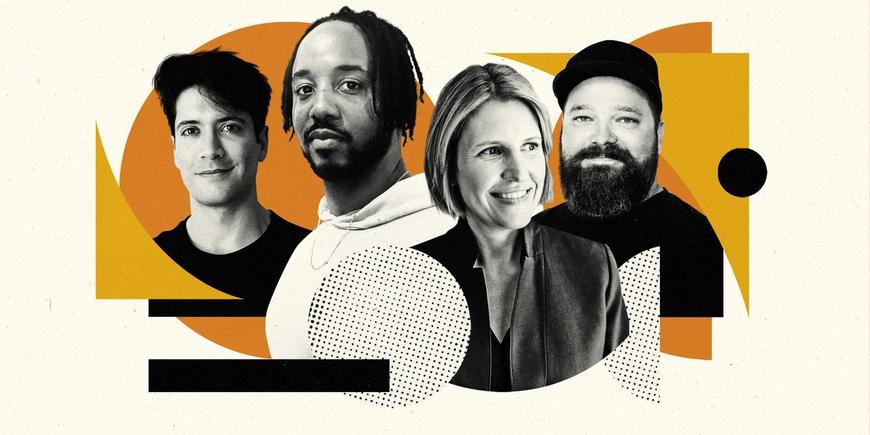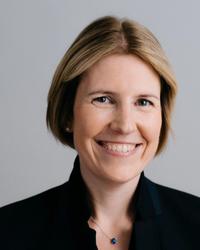A Founder-Friendly Way for SaaS Entrepreneurs To Pass the Baton
Many of the 10,000 Shopify app entrepreneurs are looking to sell their SaaS businesses, and that’s just Relay’s wedge to build a platform.

Late last year, our incubation team’s Operator in Residence Austin Simon was deep in research on acquisition platforms. He had studied the roll-up activity in the Amazon FBA and Shopify brand markets and Primary-backed Pattern Brands’ success with the model. He saw a new opportunity to build an adjacent platform to acquire and operate bootstrapped SaaS applications—a world I know well as the former Chief Customer Officer at CM Group.
In that rollup diligence, we met Ricardo Hinds, who had overseen a team of over 100 people in 26 countries as Portfolio Director at SureSwift Capital, a scaled operator of 40+ SaaS companies. He was interested in putting a finer focus on ecommerce companies, and research conversations bloomed into a cofounder partnership, with Ricardo as CEO.
Today, we’re introducing Relay, now already three acquisitions deep, and announcing its $20 million debt facility with TriplePoint Capital and the $6.25 million seed round we led with participation from Twelve Below, AlleyCorp, and Max Ventures.
Second Rodeo
The idea to roll up bootstrapped SaaS companies and start with the specific wedge of Shopify software businesses immediately caught my attention.
As Chief Revenue Officer at Sailthru, I had been involved in the company’s sale to CM Group as a martech roll-up play with Campaign Monitor and other brands. After that acquisition, I carried P&L responsibility for the roll-up, honing an informed perspective on what works—and doesn’t—in these types of businesses.
Playbooks replicated across brands. At CM Group, product lines such as Campaign Monitor and Emma were both higher velocity SaaS models that could follow similar playbooks for sales and customer support. Enterprise brands such as Sailthru and Liveclicker could also borrow from the same best practices.
“Swapportunities.” When there was consistency in the beachhead customer, there were commercial arbitrage opportunities. If a Sailthru customer wasn’t utilizing all product capabilities and exploring a less sophisticated solution, we could talk to them about migrating to Campaign Monitor before they called a competitor such as Mailchimp. Meanwhile, Liveclicker’s capabilities applied to any marketer focused on conversions, so we could easily cross-sell the tech across the portfolio.
Content arbitrage. Our teams could write content under one brand moniker and drive those leads to other products. If a potential Sailthru prospect hit the Campaign Monitor email benchmarks report, we could still route them appropriately.
Rule of 40 arbitrage. SaaS leaders generally aim for a combined growth rate and profit margin of over 40%, but with a portfolio of businesses, there’s much less pressure to balance the metrics for any one brand; it’s the portfolio numbers that matter. Some businesses can be “growers” and others “earners.”
But all these arbitrage opportunities are dampened when brands’ customer profiles are mixed, so choosing a narrow niche for Relay struck me as the absolute right approach.
And frankly, it was also refreshing as a VC to see a category of founder I don’t get to spend as much time with today: bootstrappers ready for the next phase of acceleration.
Getting Specific
In thinking about what this roll-up could be, we looked at many different app ecosystems. We chose the Shopify ecosystem because of the durable, dual tailwinds of broader ecommerce market growth (on track to be a $1 trillion market in just the U.S. by the end of 2022) and Shopify’s increasing market share (from 6% in 2019 to 10%+ as of 2021), the rapid maturation of their app ecosystem (~2,500 apps in 2018 to ~10,000+ in 2022), and the long tail of the market that could be a venture-backable entry point.
From my past experiences, the singular ICP was a huge advantage too. Starting with a tight focus on speaking to and serving the Shopify merchant, there are opportunities to create cross-sell marketing that applies to 100% of our target audience as well as to selectively segment and offer targeted solutions accordingly.
The team we’ve assembled to do this couldn’t be a better match, either. Austin will be staying on as cofounder and applying his finance background to leading Relay’s M&A work.
Primary found Ricardo Hinds to come in as CEO—on our first call it was clear he was the right person for the job. He was previously Portfolio Director at SureSwift Capital, where he ran a team of 100+ in 26 countries across a number of ecommerce SaaS businesses.
Ricardo and Austin are joined by cofounder Daniel Gamito, a veteran product and growth leader of B2B SaaS companies with experiences at ManyChat, ConvertKit, and Zipify; Ricardo Amorim, a devops and technology leader with experience building acquisition platform infrastructure; Vijay Khandekar, a skilled growth marketer responsible for scaling organic and paid strategies for many B2B SaaS and ecommerce companies; and Petra Rijo, a talented portfolio business leader who previously managed multiple SaaS businesses at SureSwift.
Where we are and what’s ahead
We’re coming out with this news today, but the team has already kicked off a truly impressive initial sprint.
Relay has already completed three acquisitions—Fomo, POP! And SmartrMail—and is transforming them with additional resources and a repeatable growth playbook to accelerate each asset.
The funding puts even more fuel toward this goal, so get in touch if you are or know a bootstrapped ecommerce SaaS founder we might help with a legacy-building exit.
